Resources
Resources in Farthest Frontier come in a variety of forms and are acquired through a number of means. At first, you will be largely reliant on nature’s bounty, collecting wild plants and hunting animals for food, but soon enough your people will develop new means of sustaining themselves.
Depending on where you settled, some resources may not be immediately available, and others may not be available at all in your land. How you capitalize on what’s at your disposal is ultimately up to you.
World Resources
The world of Farthest Frontier offers a lush landscape and an opportunity for your people to start a new life. Depending on the difficulty settings you’ve chosen, it is also rife with danger. Take advantage of the resources surrounding your nascent town and you will soon have a thriving city.
What resources are available is tied closely to the surrounding biomes. Dry areas have more sparse tree coverage, but are plentiful in stone. Likewise, clay deposits are more frequently found in lower elevations, near water, while sand is plentiful in arid zones. Iron deposits are found almost exclusively near the mountains.
Willow is found along shorelines or in the swamps. You will not find any nuts to forage out in the open plains, so seek dense forests.
Even the presence and density of the deer population will depend on the availability of tree cover and proximity to water.
In this way, where you choose to settle will guide how your town develops, what resources are readily available and what will be a source of struggle. You may find that you need to trade for certain goods, using what your town produces as leverage in exchange.
Wood and Stone
Wood logs are the foundation upon which your town will grow. Many buildings require logs for construction, and your people will need logs to chop into firewood to endure the harsh winter cold. To learn more about harvesting wood, stop by the Basics page.
Trees naturally regrow from surrounding mature trees, but clear cutting an area can drastically slow down, or even prevent, that process; so be mindful of your logging activities. Sustainable logging can ensure your city has wood for years to come. Cutting down swathes of forest will net you many resources in the short-term, but can leave the area barren in the end.
Likewise, stone is an important resource required for many structures, including formidable Fortified Walls to keep threats out of your town. Stone is marked for harvest in the same way as trees.
However, unlike trees, stone is a finite resource and your laborers will have to seek out resources further and further from town in order to gather it. Work Camps are an excellent solution for this. Trading is also an option.
Foraging
When your town first starts out, you will likely rely on foraging for at least some of your people’s diet. Wild greens, mushrooms, nuts, and berries grow abundantly. Bird nests will have eggs. Foraging is also the only source of herbs, medicinal roots, and willow, which help stave off disease and are used in the production of medicines, soap, and baskets.
Hint: As you encounter blueberry bushes out in the wild, you may want to relocate them to create a sprawling blueberry patch for your foragers to harvest every season.
Foraging is labor-intensive and not the most efficient source of food, but it can spell the difference between survival and starvation.
Hunting
Hunting is a reliable source of food, but it is also a valuable gathering method for more than just meat. Hunters will process animal carcasses to generate Hides and Tallow, which your town requires to produce shoes, coats and soap.
Deer can be found throughout the wilderness, but a single herd can only support so many hunters. Hunting too heavily can wipe out a herd entirely or cause it to migrate further away.
Boars, while a large source of materials, can be dangerous and hunters will avoid them unless threatened by default. You can use combat commands to order your hunters to track down and hunt a boar, if you wish. To learn more about this technique, stop by the Combat page.
Note that hunters will not hunt without arrows and either a bow or crossbow, so your town will need to be stocked with those tools in order for Hunter Cabins to function. Hunters will hunt any deer they spot on the way to their work area. To learn more about work areas, stop by the Buildings page.
Hunter Cabins can be upgraded to Hunter Lodges. Hunters working out of lodges can also place traps in order to capture small game for additional hides. To learn more about upgrading buildings, stop by the Buildings page.
Fishing
Fishing, like hunting, is a stable source of food for your growing town. Unlike hunting, however, fishing is exclusively for food production.
A Fishing Shack requires coastal water nearby in order to catch fish. Ideally, you will find water with a school of fish for increased yield.
Villagers working at a Fishing Shack will only fish in the waters designated by its work area. To learn more about work areas, stop by the Buildings page.
A body of water only has so many fish in it, and they can become depleted from overfishing. Fish numbers will naturally recover over time.
Mining
A prospering town will likely eventually want to harness the raw materials of the earth. For this, you will need to invest in mines and pits.
Mines can be used to gather iron, gold, and coal while clay and sand are gathered in pits. Both types of structures need to be placed over a deposit. To learn more about these deposits, stop by the Overlays page.
These valuable resources will help your town advance and prosper to new heights, with new goods for trade and consumption and sturdier construction materials.
Note that mining is dangerous work and villagers working in mines and pits are more susceptible to injuries.
Manufacturing
Raw materials serve many functions in Farthest Frontier, but every town will eventually require advanced manufacturing in order to progress and grow. From planks for construction to iron for weapons and tools, your town’s future is in a thriving industry.
Production Limits
When managing all of the industries in your settlement, there may come a time where you will want to disable certain industries to maintain ideal amounts of manufactured goods in stock and to keep things running efficiently. Min/max Production Limits are there to facilitate doing so without micromanaging every detail.
To set Production Limits, select a resource either from the building that manufacturers it, or from the Resource Summary window. When Production Limits are set, the respective buildings will automatically pause when the max limit is triggered within the town’s storage, and automatically resume when the min value is no longer met.
Production Limits are a good way to control how fast raw materials are consumed so that they are not used up too quickly, or to ensure that your settlement always has enough firewood in stock for Winter without micromanaging the woodcutters.
Note that you can also permanently discard resources using this menu.
Intermediate Materials



While many raw resources have uses, some need to be refined further before they can serve a purpose. These intermediate goods are then refined further into usable goods.
A good example of this is grain getting milled into flour at a wind mill, which can then be baked into bread at the bakery for villagers to eat.
Another example is the impure ores your town will mine. Although some traders will not shy away from buying the raw materials at a cheaper price, their true value comes from their processed form.
Ore must be smelted at a Forge before it serves any function. Gold is the currency of the land and can be used for buying goods at the Trading Post. It is also used in the construction of many decoration buildings and in upgrading the Town Center.
Iron in turn is used to make a number of advanced goods, including tools and weapons, and is even involved in upgrading many structures. Its value cannot be overstated for towns that have conquered the frontier.
These are just some examples of resources that require further refinement before they reach their true potential.
Goods



Goods are the final products from your town’s industry.
Valuable tools can not only improve productivity, but are also required for some buildings to function. In fact, your town will need to trade for Heavy Tools to get its industry off the ground in the first place. Need tools to make tools!
Weapons and armor help keep your people safe during animal and raider attacks. A crude club might suffice at first, but as raiders grow bolder and more dangerous, survival will depend on arming a proper military force. To learn more about Farthest Frontier’s optional combat, stop by the Combat page.
Luxury goods become a fact of life as the town prospers and the villagers seek more comfortable lives. To learn more about luxury goods, stop by the Happiness page.
These commodities, and more, will define your town’s economy as it prospers and grows, easing hardships and ensuring security as you conquer the challenges of the frontier.
The resources available to you will likely determine what your industry focuses on, while the rest can be acquired through trade with visiting merchants. Goods, as is fitting of commodities that require such a significant investment from your town, will often fetch the best prices, but this also makes them expensive to purchase in turn.
Trading
The Trading Post is a critical structure for every settlement that hopes to prosper and serves as another avenue of acquiring resources for your town.
Trading with traveling merchants is not only an opportunity to fill any gaps your town may have in its production, it’s also a great opportunity to make tons of gold.
To learn more about the Trading Post, stop by the Trading page.
Resource Storage
Resources in Farthest Frontier are transported in real time and have a physical presence. This means that where you place your buildings relative to the resources and structures they depend on can have a big impact on your town’s success. Likewise, storage placement is pivotal to an efficient town.
Villagers that spend most of their time trekking back and forth across long distances to fetch raw materials and then deliver their produced goods to storage are not going to be highly productive.
All storage buildings, with the exception of granaries, can be upgraded in order to increase storage capacity and durability and to reduce spoilage. To learn more about upgrades, stop by the Buildings page.
Storage Limits
As your settlement grows, you will naturally need to increase the number of storage buildings in order to not only keep the vast resources gathered and produced by your people, but to keep them within reach of the facilities that require them.
To best facilitate this, you can select a resource in storage building’s window and set min/max Storage Limits. When the maximum set is reached, laborers and wagons will transport the excess to other storages. Likewise, if the min is not met, some resources will be transferred from other storages to meet the quotas.
Note that you can also permanently discard resources using this menu.
Food Storage
In order to survive, your town needs a steady supply of food, and an excess stowed away for the winter months or to endure periods of hardship like major raids or disease outbreaks that impact food production. Food naturally spoils over time along with some types of goods but proper storage can greatly extend its shelf-life.
To learn more about food production and spoilage, stop by the Food page.
Whatever food your villagers don’t bring to their homes and markets for consumption ends up stored in your town’s storage structures. Food is stored either in the Storehouse or the Root Cellar.
The Storehouse is good for general storage, but it’s not the ideal place to keep food. Your food supplies will last much longer in a Root Cellar, especially if you use barrels.
Villagers stop by Root Cellars often to drop off produced food and to collect it when they are hungry or need to restock. So consider these factors when placing Root Cellars around your town.
Goods Storage
The village needs resources to grow, and those resources have to be stored somewhere. Most non-food items go in a Storehouse, but certain raw materials, including building materials such as logs, stone, and planks, go into a Stockyard.
Raw ores and minerals from mines and pits are also stored in a Stockyard. The heavy weight of these materials means that transport is difficult and slow, factors to consider when distributing Stockyards around town.
While grain and flour can be stored in a Storehouse, the most optimal way to store and preserve them is inside of a Granary. Inside a Granary, grains can last for years and are far less likely to attract rats. In fact, the Granaries are built elevated off the ground atop stone piles to deter rodents.
To learn more about Rats and how to deal with them, stop by the Food page.
Resource Summary
One of the Town Center features is an overview of your town. This includes a summary of all resources stored in the town, default hotkey R.
This window is a great reference for all of the resources in the game, including ones not yet acquired by the town. Checking the Resource Summary regularly can be helpful to discover issues, such as when the town us running out of critical goods.
Selecting a specific resource provides even more in-depth information. At the bottom of the UI is a summary of where the resource is produced, what buildings it is used by or used to construct, and what goods are made with that resource.
This detailed run-down is a great starting point for anyone still learning how all of the resources and buildings in the game interact.
Salvage Sites
As your villagers explore the wilderness, they will occasionally stumble upon Salvage Sites. These are the ghosts of the past, futile attempts at settling in the frontier. While these predecessors have failed where you hope to succeed, scavenging what remains can still yield valuable resources.
Sending laborers to excavate these remnants will always uncover firewood and some building materials, but more precious resources may also lay buried within.
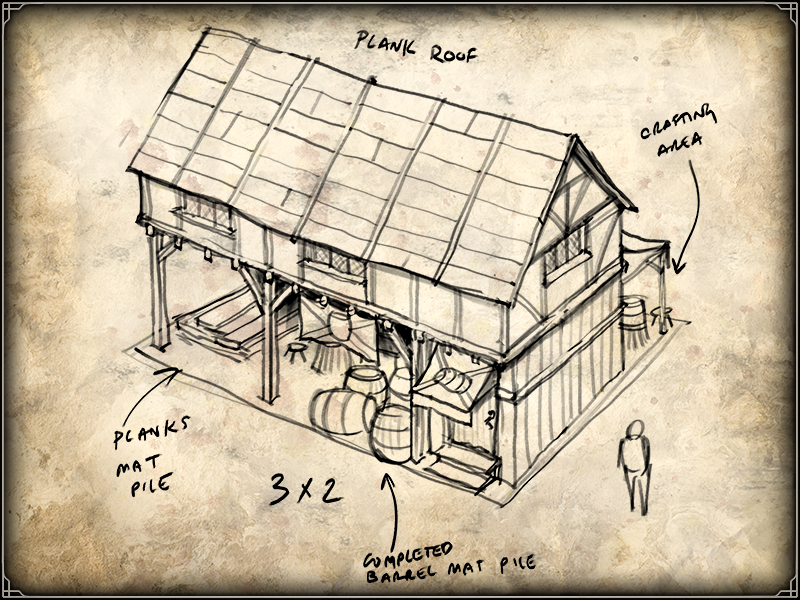

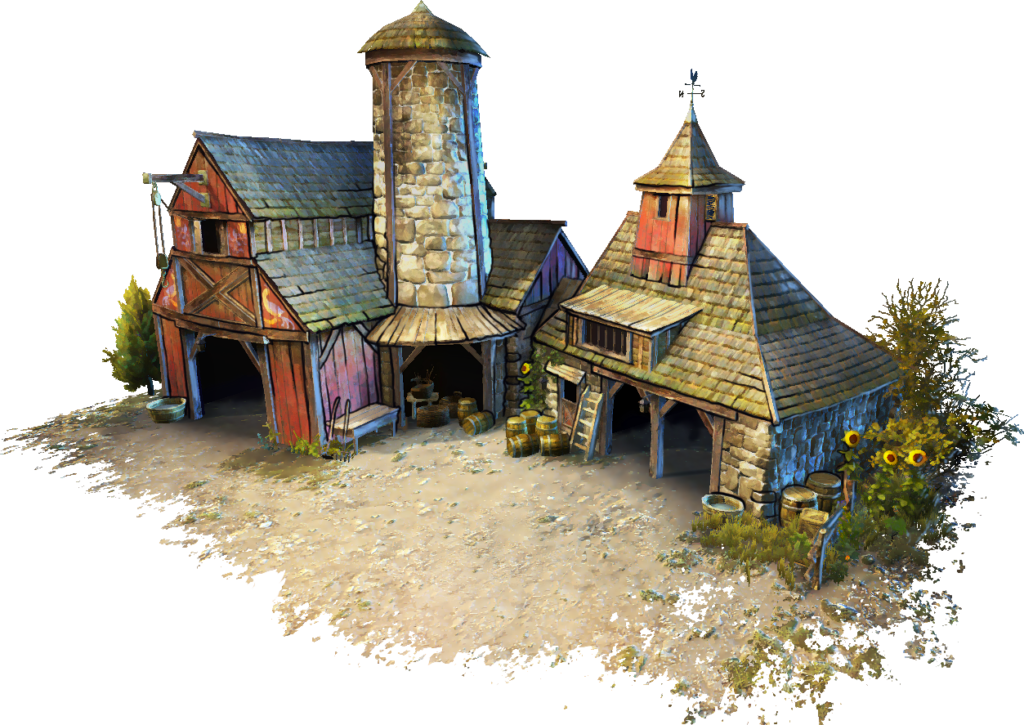
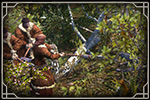
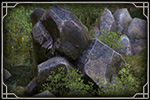
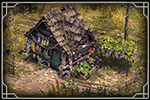
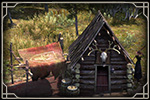
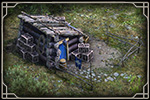
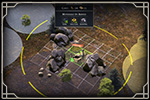
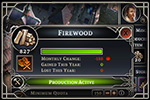
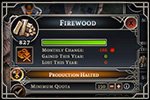
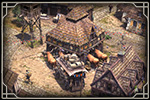
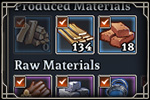
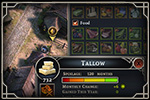
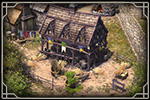
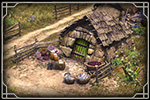
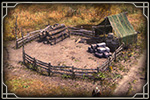
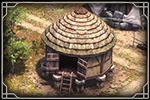
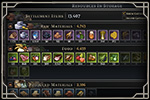
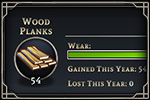
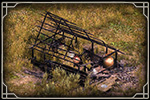
 Basics
Basics